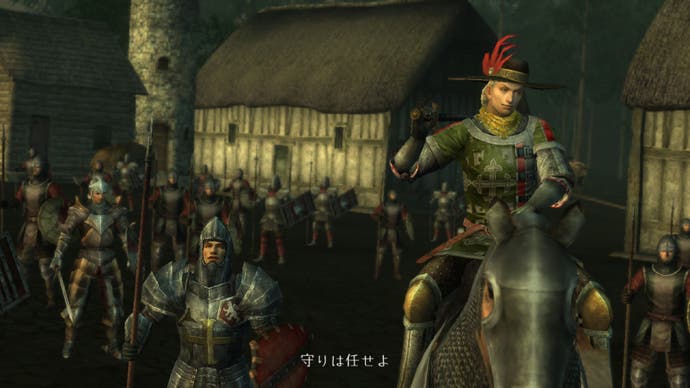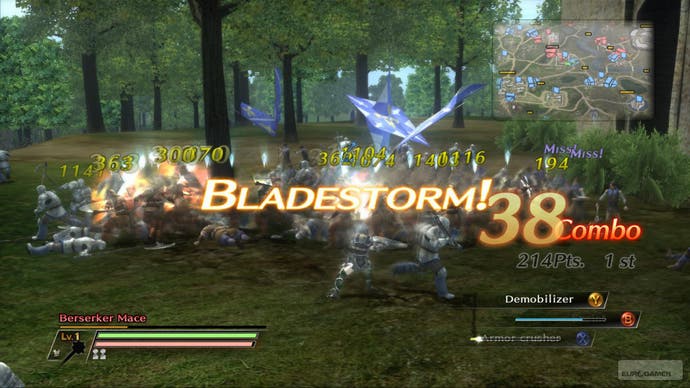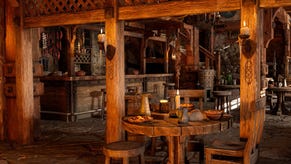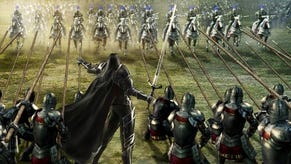Bladestorm
End of a Dynasty?
In an industry afflicted by chronic sequelitis, there's no case more serious and advanced than Dynasty Warriors. A quick trip to Wikipedia confirms that since the series debuted on the PlayStation 2 in 2000, we've had 18 assorted Dynasty Warriors titles - and that's not counting spin-offs like Samurai Warriors (same game, different historical period).
That's a whole lot of games which are, in essence, pretty much the same. We mean that in the nicest possible sense; but it's certainly true that Dynasty Warriors has attracted something of a reputation for repetition.
Checking out early videos of Bladestorm, Koei's forthcoming next-gen battlefield epic, anyone would be forgiven for assuming that more of the same was in store. The game focuses on Europe rather than the Far East, with the two opposed sides being France and England and the conflict the Hundred Years War - but it's not just the geography that's half a world away from Dynasty Warriors.
Taking Liberties

On the contrary, Bladestorm is actually a remarkable departure for Koei's battle games. It feels like what might happen if you asked the team behind Dynasty Warriors to make a medieval strategy game - which, in fact, is probably exactly what happened. The game draws on the action heritage of Dynasty Warriors, certainly, but at its heart this is a strange hybrid between real-time strategy and RPG.
At its most basic level, it works like this; you are a commander on the battlefield, a powerful mercenary who can run around and take direct control of units of troops simply by shouting orders at them. At any given moment, you'll be engaged in a large-scale battle of some description, and will need to work out how best to apply the units at your disposal to wipe out the enemy.
This all works on a combined arms basis - a tangled web of rock/paper/scissors calculations, if you like. Cavalry on horseback will slaughter most foot soldiers, but they will in turn be ripped to pieces by properly prepared soldiers with pikes, who in turn may be more vulnerable to archers - and so on, and so forth. Systems a little bit like this have been present in Dynasty Warriors for years, but here they take centre stage; choosing and commanding units is game here, not button mashing to spam your own super-powerful attacks into the melee.

Herein lies the key difference that convinced us that Bladestorm is no simple Dynasty Warriors clone in European clothing. In Dynasty Warriors, you're a superhero on the battlefield, not just a good warrior. In Bladestorm, your attacks are powerful, but remarkably limited - and they generally have long recharge times. Try to run into a skirmish with the wrong kind of troops, or worse, no troops at all, and you'll quickly discover how un-superhero-like your character really is.
This isn't to say, however, that the game is particularly realistic. There are plenty of touches which emphasise fun over realism, including the ability to apply a variety of stat-boosting buffs to your current troop by raising various flags you'll discover as you progress, and the ability to hire bands of mercenaries who can be summoned to the battlefield at any point.

The level of poetic license which Koei has taken with the Hundred Years War also departs heavily from any sense of reality. The game pitches English leader Edward of Woodstock, better known as the Black Prince, against Joan of Arc - conveniently ignoring the fact that Edward had been dead for half a century when Joan was born. Then again, the game's extensive line-up of military units features various Amazons, Ninjas and the likes at its more obscure ends, so it's fairly safe to say that historical accuracy isn't a major concern.
That unit line-up actually stretches to around 25 different types of unit - and each unit boasts a number of sub-types, so for example the "Broadsword" type breaks down into those that use shields, those that use two-handed swords, those armed with katanas... The end result is hundreds of possible unit types, each with unique strengths and weaknesses in battle.




